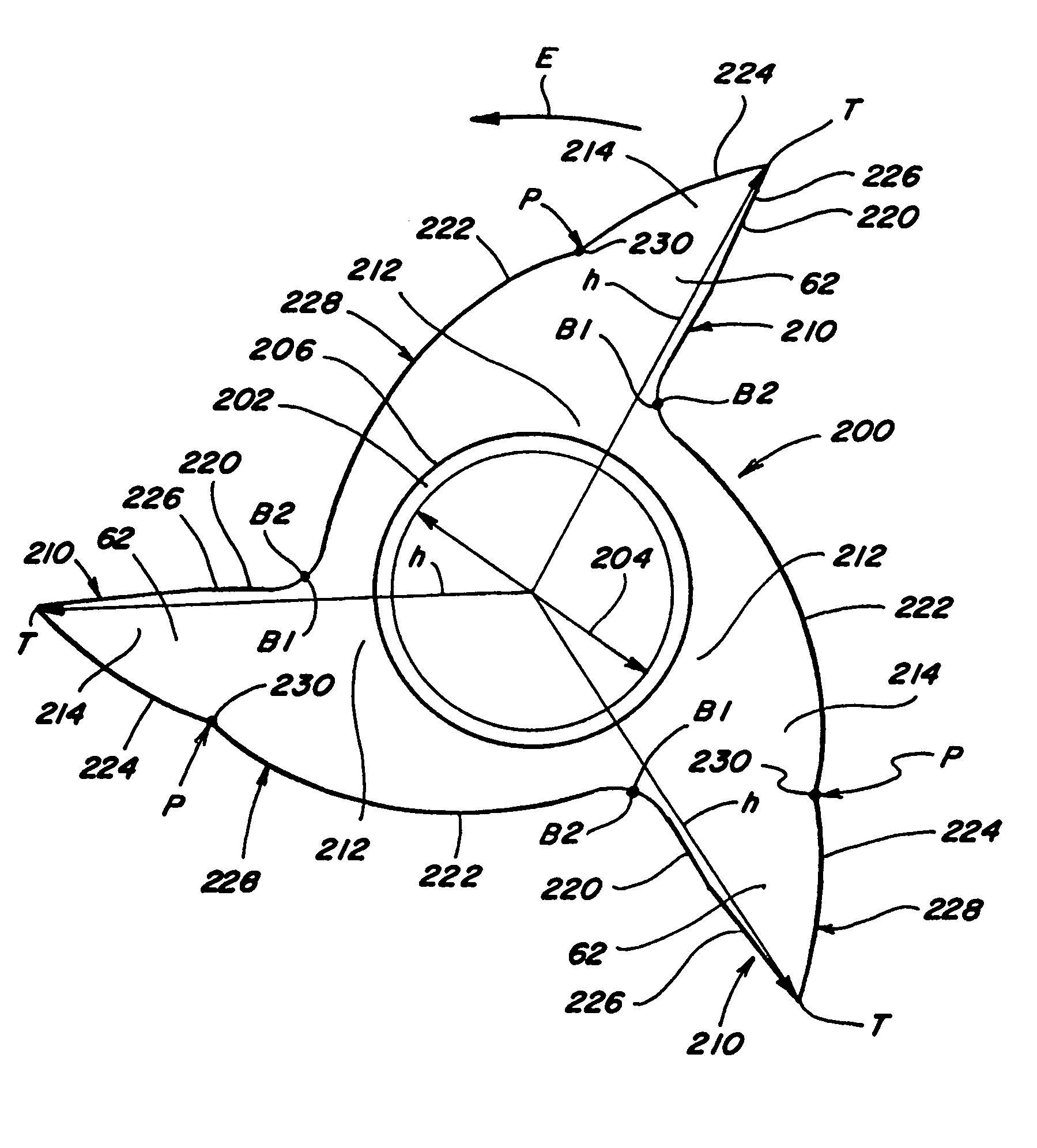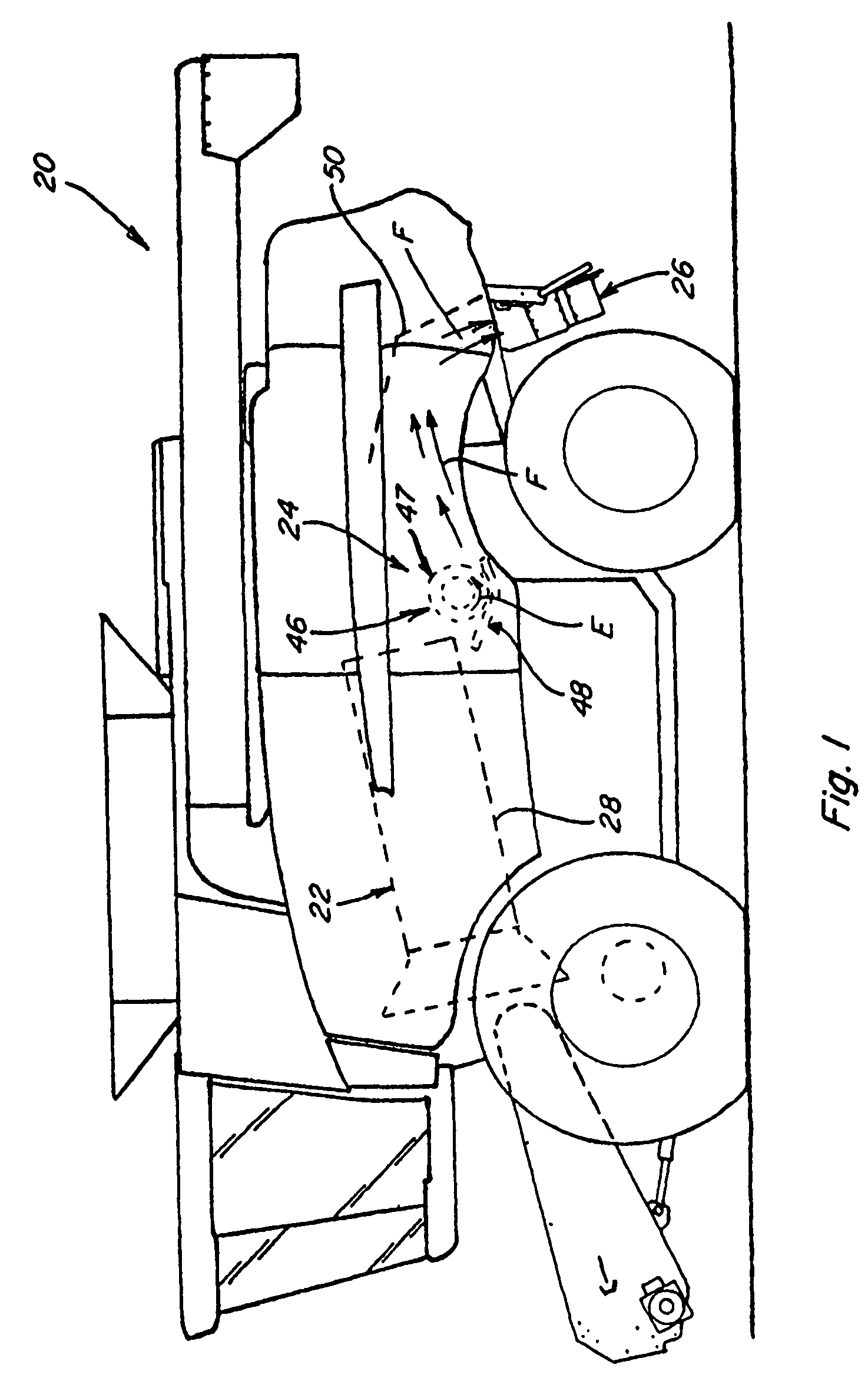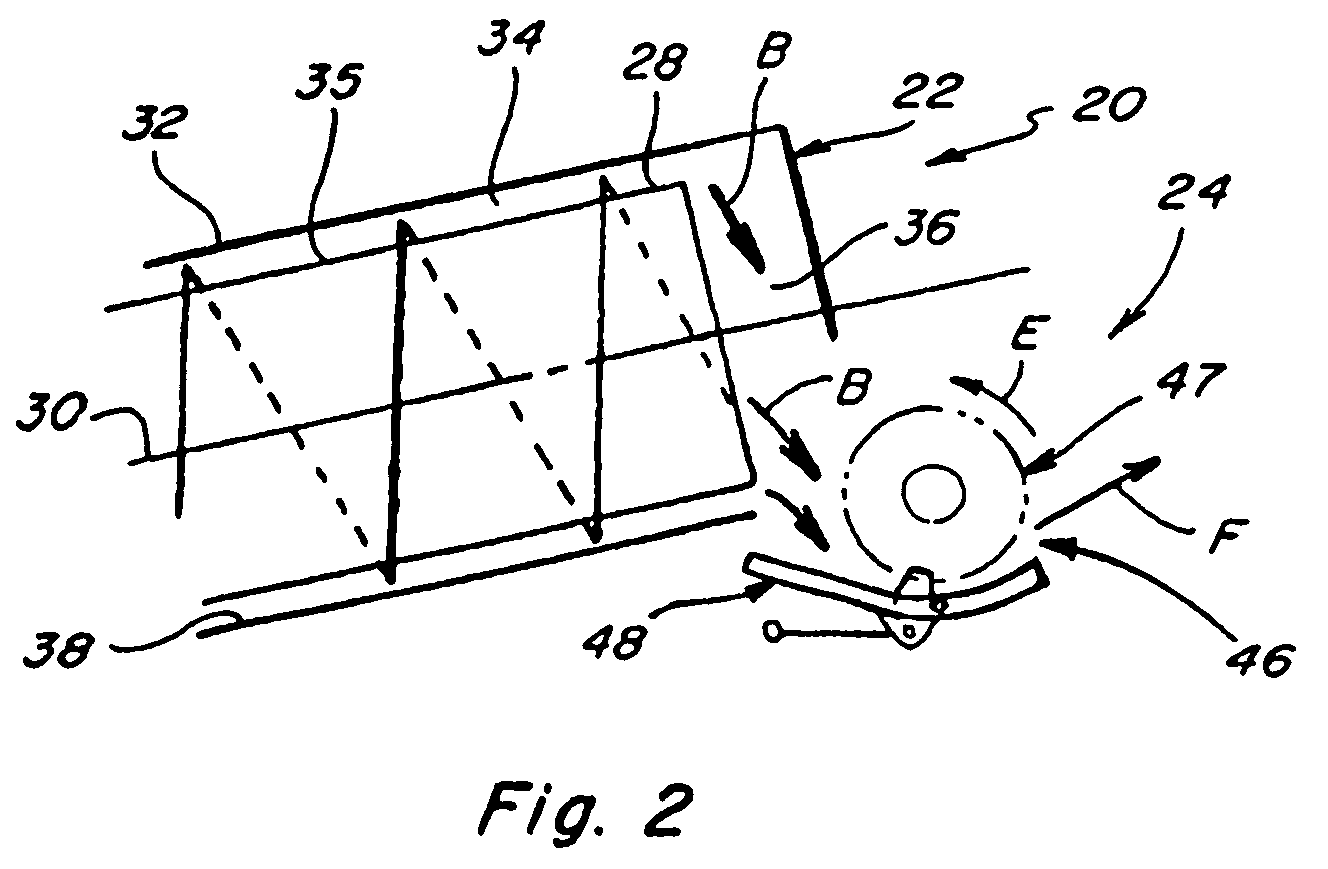Rotor tine and rotary element configuration for crop residue treatment systems
a crop residue and rotary element technology, applied in baling, agriculture, agricultural tools and machines, etc., can solve the problems of reducing the cutting quality, reducing the uniform length of crop residue pieces, and most crop processors in the industry have been limited to operation speeds of about 100-300 rpm, so as to reduce the load and improve the quality of the cut. , the effect of good chop quality
- Summary
- Abstract
- Description
- Claims
- Application Information
AI Technical Summary
Benefits of technology
Problems solved by technology
Method used
Image
Examples
Embodiment Construction
Referring now to the drawings, wherein preferred embodiments of an improved integral chopper assembly that includes the present invention are shown, wherein like numerals refer to like items, wherein certain elements and features may be labeled or marked on a representative basis without each like element or feature necessarily being individually shown, labeled, or marked, and wherein certain elements are labeled and marked in only some, but not all, of the drawing figures, FIGS. 1 and 2 depict a representative agricultural combine 20 that includes a longitudinally axially arranged threshing system 22 and a crop residue treatment and distribution system 24 with a crop residue spreader 26, all of which, except for the improved integral chopper system that is the subject hereof and which is included within the crop residue and distribution system 24, are of well known construction and operation.
As can be generally and essentially observed from a review and study of FIGS. 1-2, threshin...
PUM
 Login to View More
Login to View More Abstract
Description
Claims
Application Information
 Login to View More
Login to View More - R&D
- Intellectual Property
- Life Sciences
- Materials
- Tech Scout
- Unparalleled Data Quality
- Higher Quality Content
- 60% Fewer Hallucinations
Browse by: Latest US Patents, China's latest patents, Technical Efficacy Thesaurus, Application Domain, Technology Topic, Popular Technical Reports.
© 2025 PatSnap. All rights reserved.Legal|Privacy policy|Modern Slavery Act Transparency Statement|Sitemap|About US| Contact US: help@patsnap.com



